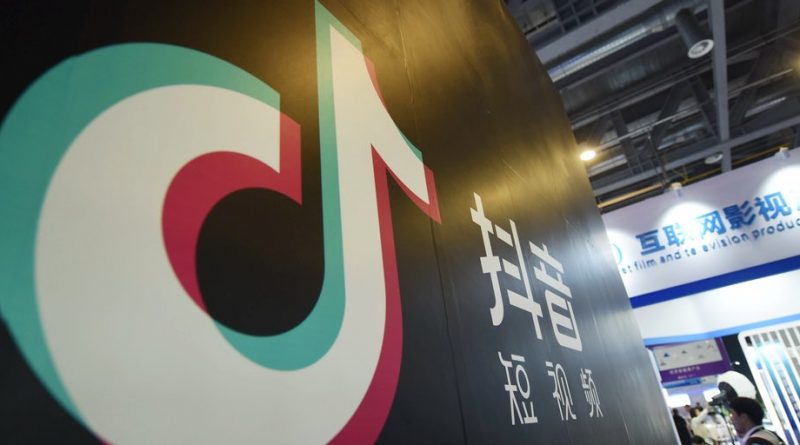Caution: Place Your China E-Commerce Bets Carefully | BoF Professional, China Decoded
SHANGHAI, China – This weekend, e-commerce giant Tmall is hosting a two-day fashion festival to mark the end of Shanghai Fashion Week and start the run-up to China’s most important — and the world’s largest — digital sales event next month.
Singles’ Day, known as Double 11 within China because it falls on the 11th day of the 11th month each year, has morphed into a month-long e-commerce sales frenzy since its inception in 2009.
It’s also historically been dominated by two powerful players: Tmall-parent Alibaba and JD.com. Last year, the event netted Alibaba 268.4 billion yuan ($38.3 billion) in gross merchandise volume, or GMV, which measures the value of goods sold on the platform. Meanwhile, JD.com generated sales of 204.4 billion yuan ($29.2 billion). Smaller players like group-buying upstart Pinduoduo, social commerce darling Xiaohongshu, livestreaming app Mogujie and specialty luxury e-commerce platform Secoo also jostle for share of consumer spending with Singles’ Day promotions. But they don’t come close to matching Alibaba or JD.com for scale, and so far they haven’t gained much traction with international brands.
Indeed, China’s two most powerful platforms have only gained clout this year, as brands flocked to increase their footing in both e-commerce and the Chinese market amid a broader global slowdown in spending. In September alone, labels including Marc Jacobs and Jimmy Choo joined Tmall’s Luxury Pavilion, an app-in-app dedicated to luxury flagships, while A-Cold-Wall and Ami Paris both launched on JD.com.
This Singles’ Day, however, these major platforms are facing more strident competition, as short video players Douyin (the Chinese version of TikTok) and arch rival Kuaishou pivot to e-commerce.
Of all the challengers, Douyin is the one Josh Gardner, CEO and Co-Founder of Kung Fu Data, an e-commerce partner for brands in China, is most excited about.
“Douyin has a shot… the virality of the platform is worth testing for commerce,” he said. “I hope [it works]; someone has got to unlock the monopolies of these big marketplaces in China.”
Making a Move
Douyin is a powerhouse social media platform within China, with 600 million daily users — many of them young and from first and second tier cities — hooked on its viral content.
Until now, the company has largely relied on advertising for revenue, but things on that front are getting complicated: More than half of China’s online population already use Douyin daily, which makes it increasingly hard to sell advertisers on the prospect of significant audience growth. International expansion plans are tricky too, thanks to bans or threatened bans on TikTok by authorities in major markets like the US and India.
Douyin has a shot… the virality of the platform is worth testing for commerce.
E-commerce is an obvious solution to this problem. While Covid-19 has accelerated the channel’s growth globally, in China it’s been turbocharged. Digital research firm eMarketer predicts e-commerce sales will increase more than 30 percent to nearly $2 trillion in China this year, accounting for roughly 35 percent of the country’s total retail sales. In the US, little more than 10 percent of retail sales occur online. Douyin wants in on the action.
The company’s “already so big and they lose so much value … because people transact elsewhere,” said Patrice Nordey, managing partner of international strategy and operations at Fabernovel. Douyin “wants to capture the whole value chain of what they are doing.”
But what’s in it for fashion brands? E-commerce behemoths like Alibaba’s Tmall and JD.com are already bending over backwards to attract fashion, beauty and luxury brands to their platforms, promising access to market share, valuable insights on their hundreds-of-millions-strong customer base and luxury positioning. Douyin on the other hand, has an image problem, encountering many of the issues that made brands initially hesitant to engage with Chinese e-commerce platforms at all.
“Anyone can do a store [on Douyin], they can sell fake products, they can offer shitty customer service and [Douyin has] no way to control that,” Nordey said. “Just because you have the capability to close a transaction, doesn’t mean the shopping experience will be any good. It’s a totally different skill set to know how to execute a great shopping experience.” A Douyin spokesperson said the company has zero tolerance for counterfeit goods.
But the company is playing hardball, making it increasingly difficult for brands to use its platform for marketing if they’re not also using it as a sales channel. Since September 6, merchants have had to go through Douyin to partner with key opinion leaders (KOLs,, essentially influencers) on its platform. They also can’t promote products from third party e-commerce websites through Douyin’s livestreaming service any more. Last week Douyin banned links to third-party websites from appearing on its live-streaming channels at all, a move that will prevent merchants from redirecting traffic to popular e-commerce websites like Alibaba’s Taobao and Tmall, as well as JD.com. Instead they will have to transact within Douyin.
Douyin isn’t the only platform making big moves into e-commerce as Singles’ Day looms. Its short video rival Kuaishou recently announced that it moved more than 500 million e-commerce orders in August, claiming that makes it China’s fourth-largest e-commerce provider behind Alibaba’s Taobao and Tmall, JD.com and Pinduoduo. It declined to reveal sales revenue or GMV, the most commonly used metric to measure e-commerce reach in China.
But many of the companies gaining ground may struggle to appeal to big fashion and beauty brands. Kuaishou is primarily a platform to sell agricultural goods its rural base of content creators produces. Meanwhile, Pinduoduo has made significant inroads stealing market share in China’s lower-tier cities, but its low-price, group-buying model has a trade off: it requires brands to heavily discount products to participate in its promotions.
Like Douyin, it also has a reputation as a platform heavily populated by fakes (it’s often compared to Taobao in its early days), making it a less-than-ideal partner for many brands. A Pinduoduo spokesperson said the company has the “toughest enforcement policy in the entire industry” to penalise counterfeit sellers and employs state-of-the-art technologies to proactively prevent fakes from landing on its platform.
Dependency Issues
Still, in a dismal year where brands are increasingly reliant on e-commerce, there’s also growing concern that their China businesses are all in one basket (or two baskets at most).
“This is what all my clients want to talk about, because they want to accelerate their e-commerce business, but their own dot com is doing zero and Tmall is doing 80 percent of their e-commerce sales,” Nordey said. “E-commerce is getting 10, 20 as much as 50 percent of the total sales, so at some point they realise all their eggs are in this one platform.”
E-commerce is getting 10, 20 as much as 50 percent of the total sales, so at some point they realise all their eggs are in this one platform.
The size and scale of Alibaba and JD.Com’s platforms come with significant trade-offs. Brands are stuck jostling for attention in crowded marketplaces with no direct connection to their consumers. Marketing costs have also skyrocketed in recent years, making these channels an increasingly expensive way to target customers. Brands looking to establish a solid toehold in China’s rapidly-growing e-commerce realm need to understand what is out there in terms of secondary e-commerce options in China.
Nordey points to e-commerce platform Secoo as a natural choice for luxury brands, as it’s user base is already heavily populated by luxury consumers (particularly those from lower tier cities who have less access to brands’ own stores). Xiaohongshu offers the equivalent for beauty, though its fashion offering is smaller.
Sites like Xiaohongshu and KOL livestreaming platform Mogujie are particularly attractive for luxury because they’ve cultivated a community that uses them as a trusted source to find new brands and content, said Gardner.
“Taobao didn’t start livestream commerce, it was Mogujie, and even today they’re really strong in livestream commerce – specifically in fashion and beauty. It’s a tight-knit community between KOLs and consumers. Xiaohongshu has a very similar dynamic. Young women go to these places to find genuine content,” he added.
The Private Traffic Conundrum
Then there’s WeChat mini-programmes, apps within the Chinese super-app that can facilitate membership programmes, e-commerce and more. For Nordey, WeChat mini-programme e-commerce is the “final destination” for brands looking to unhook themselves from dependence on China’s platforms, giving companies a direct channel to consumers.
It’s a market that remains a fraction of the size of China’s overall e-commerce sector, but is growing fast and gaining traction with luxury players. Last year, WeChat mini-programmes saw total transactions of over 800 billion yuan ($115 billion), an increase of 160 percent year-on-year, the company said. While luxury brands have been hesitant to jump into other online marketplaces in China, 60 percent of luxury fashion brands and 51 percent of watch and jewellery brands surveyed for Gartner L2’s 2019 Digital IQ Index: Luxury China report had WeChat stores as of April 2019.
Nonetheless, while “private traffic” has been one of the major buzzwords of Chinese social media marketing in 2020, successful examples among high-profile international players remain elusive.
The standard bearer for private traffic success remains Chinese beauty brand Perfect Diary, which has built a community of five million customers on thousands of private WeChat groups who buy directly through the brand’s mini-programmes. But its success has so far proved unique. While international brands are increasingly experimenting, they have yet to invest the same time or money into building similarly professional private traffic operations.
“There are millions of mini-programmes, [2.4 million mini-programmes as of January 2020, according to Tencent figures] if you divide it up there is revenue of $47,000 per programme, that’s nothing. It’s like an empty pond, there are no fish,” Gardner said.
Though Nordey grants customer acquisition is an expensive business and scale on WeChat is hard to come by for all but the biggest players in the market, he still thinks it’s worth the investment for the pay-off of long-term control.
“Develop these and you can control everything yourself, that’s the goal. You pay to get the customer once, but you don’t pay every time that you want to reach consumers, as you need to with a marketplace platform,” he said.
In short, while everyone seems to agree that diversification away from the biggest marketplace players is a good idea, and the addition of competition from a player as dynamic as Douyin is an exciting new option, there is no one-size-fits-all approach to winning China’s e-commerce game.
The good news is, there’s no shortage of options for those who want to play.
时尚与美容
FASHION & BEAUTY

The award winners at China’s Green Carpet Fashion Awards | Source: Courtesy
Green Carpet Fashion Awards Make China Debut
Almost 300 invitees gathered for a gala dinner inside China’s tallest building to celebrate the Green Carpet Fashion Awards in Shanghai on October 10. The event ran alongside Shanghai Fashion Week and was attended by celebrities including Chris Lee, who was recognised with the ‘GFCA Asia Change Maker Award’ on stage. As well as livestreamed speeches from Carlo Capasa, chairman of the Italian National Fashion Chamber, and Livia Firth, creative director of Eco-Age, five awards were handed out on stage at the Shanghai event, including a ‘GFCA Eco Stewardship Award’ to Chinese cashmere giant Erdos and the ‘GFCA Sustainable Producer Award’ to the Chenfeng Group. (Press Release)
Report: Li Ning Looking to Invest in Clarks
LionRock Capital, a Hong Kong-based private equity firm, is negotiating to acquire a minority share of the troubled British footwear brand Clarks for somewhere between £100 million to £150 million ($130 million to $195 million), according to media reports. LionRock is best known for investing in internet companies and football club Inter Milan (of which it is the second largest shareholder). But a move into the fashion world makes sense, considering the company’s chairman is Li Ning, the founder of the domestic sportswear giant of the same name. According to disclosures in Li Ning’s interim report in August, LionRock Capital will be used as a vehicle to acquire relevant European brands, signalling Li Ning’s intention to join other Chinese conglomerates to take advantage of the downturn to purse M&A. (Ladymax)
Chinese Fashion’s Latest IPO
Xinhe, the parent company of Chinese mid-tier womenswear chain Jorya, has announced plans to raise 1.2 billion yuan in an initial public offering. In application disclosures, Xinhe said it expects revenue this year of $1.82 billion, a decrease of 7 percent year-on-year. The company operates seven mid-to-high-end womenswear brands in China, including Jorya, Jorya Weekend, Anmani, GIVH SHYH, Caroline, Aivei and QDA, with the two Jorya brands generating 50 percent of the company’s total revenue. As of June 2020, Xinhe brands have 550 stores across China. (Zhongguo Fushi)
科技与创新
TECH & INNOVATION

Apple’s iPhone 12 | Source: Courtesy
Apple Launch Conspicuously Absent on Chinese Livestreaming Platforms
When Apple unveiled new versions its iPhone and HomePod on Tuesday, major Chinese platforms including Tencent Video, iQiyi, Bilibili and Weibo, didn’t carry the feed, an unusual departure from the streaming frenzy that typically accompanies a new Apple release. The absence was made more strange by the fact Apple’s official WeChat account promoted the iPhone 12 release event a week ago, saying five platforms, including iQiyi, Bilibili, Tencent Video, Weibo and Youku would livestream the event. It also included a disclaimer that the livestream partners may change. But there are fears the impromptu no-shows might mark another step in the China-US geopolitical feud. (Bloomberg)
Shenzhen is Giving Away 10 Million Yuan to Trial Digital Currency
Almost two million Shenzhen residents have applied to be one of the 50,000 randomly selected citizens who will receive a “red packet” valued at 200 yuan ($30), to spend at 3,800 designated outlets in the district of Luohu. Participants must download the official digital Renminbi app, which is not yet publicly available, to receive the currency for purchases within the next week. The internet information office of Shenzhen government said the latest trial was aimed at stimulating consumer spending to aid China’s economic recovery from the coronavirus pandemic. In April, several cities, including Shenzhen, reportedly began to trial digital currencies, even using it to pay the salaries of public servants. The currency is backed by China’s state-run People’s Bank of China, and is part of the government’s push for a cashless society, with digital currencies more easily monitored than paper money or cryptocurrencies. (The Guardian)
消费与零售
CONSUMER & RETAIL
Uniqlo Now Has More Stores in China Than in Japan
The number of Uniqlo shops in China has surpassed those in Japan, reaching 767 at the end of August compared to 764 directly-run stores in its country of headquarters. Uniqlo’s store network in China has nearly doubled in five years and parent company Fast Retailing’s China push is only accelerating. Uniqlo has added an average of seven locations each month since June, branching out into China’s regional cities. The rapid growth has been accompanied by experiments with a more integrated, omnichannel business model that Fast Retailing is also looking at exporting back to Japan. (Nikkei Asian Review)
How Brands Should Adapt to China’s Changing Retail Environment
Though China’s offline retail sector has rebounded since the country’s initial Covid-19 outbreak earlier this year, it’s an uneven recovery. Convenience stores have performed particularly well, while city-centre shopping remains below levels reached before the pandemic. A shift to online consumption has been accompanied by an increased willingness to try new products and labels. Brands looking to reach new consumers shouldn’t just be selling online, but incorporating digital elements into all parts of their business, from marketing to supply chain management. (Retail News Asia)
政治、经济、社会
POLITICS, ECONOMY, SOCIETY
Chinese Imports and Exports Surge
Goods exports grew 9.9 percent year-on-year in dollar terms to $239.8 billion last month, up from 9.5 percent growth in August, marking the fastest expansion since March 2019, according to data from the General Administration of Customs released this week. Official data also showed that China’s imports surged 13.2 percent year-on-year to $202.8 billion in September, reversing a 2.1 percent decline the previous month and marking the highest growth since December 2019. This sharp rebound in imports was driven by a continued recovery of domestic demand, several economists said. (Caixin)
Nine Million People in Qingdao to be Tested to Find Source of Covid-19 Cluster
The Chinese port city of Qingdao plans to test some nine million people within five days, after 12 locally-transmitted coronavirus cases were reported, all linked to a hospital that had treated infections imported by Chinese citizens returning from overseas. China has been largely coronavirus free since mid-August, with all cases reported in the country imported from elsewhere. Testing will now be rolled out citywide for Qingdao’s entire population of nine million, repeating the type of mass response previously seen in Beijing and other cities across China where clusters of infections have been detected. Those responses have been successful in keeping China’s overall infection rate low since the country’s initial outbreak was suppressed in March. That has enabled life to return to relative normality, with more than 600 million tourists traveling this month for the ‘Golden Week’ holiday. (CNN)
China Decoded wants to hear from you. Send tips, suggestions, complaints and compliments to our Shanghai-based Asia Correspondent [email protected].


